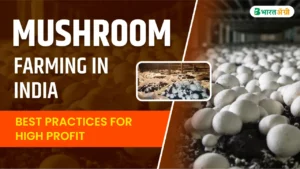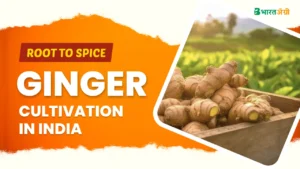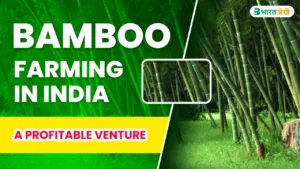
Tomato farming is a crucial part of India’s agricultural landscape. Known for its versatility and nutritional value, the tomato (scientific name: Solanum lycopersicum) is cultivated extensively across the country. This blog provides a detailed overview of tomato farming, covering everything from crop varieties to cultivation practices, aimed at helping both novice and experienced farmers enhance their tomato production.
Tomato Crop at a Glance
Cropping Season
Tomatoes can be grown year-round in India, but the major Tomato planting seasons are:
- Kharif (monsoon): Sown in June-July
- Rabi (winter): Sown in October-November
- Zaid (summer): Sown in February-March
Crop Type
Tomato is an annual crop with a life cycle that typically ranges from 100 to 120 days, depending on the variety and growing conditions.
Production and Consumption
India is one of the largest producers of tomatoes, with states like Andhra Pradesh, Madhya Pradesh, Karnataka, and Odisha leading in production. The country’s diverse climate allows for year-round cultivation, catering to both domestic consumption and export markets.
Export
Indian tomatoes are exported to countries such as Bangladesh, Nepal, the UAE, and Sri Lanka. The export quality is maintained through rigorous grading and packing standards.
Types of Tomatoes in India
Several varieties of tomatoes are cultivated in India, categorized based on their use, growth habit, and fruit characteristics:
Based on Use
- Fresh Market Varieties: Grown for direct consumption.
- Processing Varieties: Used for making sauces, pastes, and juices.
Based on Growth Habit
- Determinate Varieties: Bushy plants that grow to a fixed size and bear fruit all at once.
- Indeterminate Varieties: Vining plants that continue to grow and produce fruit throughout the season.
Popular Varieties
Below are the popular tomato verities in India:
- Advanta Shivaji
- East West Rani
- Seminis Abhilash
- Syngenta Heemsona
- Syngenta Heemshikhar
- VNR Uma
- BASF Nunhems Lakshmi
- Mahyco No. 3619
- BASF Nunhems Arya
- Pusa Ruby
- Arka Vikas
- Roma
- Rashmi
- Arka Saurabh
Major Tomato Producing States in India
The highest tomato producing state in India is Andhra Pradesh, followed by Madhya Pradesh, Karnataka, Odisha, and West Bengal. These states benefit from favorable climatic conditions and have well-established farming practices that contribute to high yields.
Required Climatic Conditions
Tomatoes thrive in warm, sunny conditions with optimal temperatures ranging from 20°C to 25°C. Extreme temperatures, either below 10°C or above 35°C, can adversely affect growth and fruiting. Tomatoes require a frost-free period and are sensitive to prolonged drought and excessive rainfall.
Soil Requirement
Tomatoes grow best in well-drained, sandy loam to clay loam soils rich in organic matter. The ideal pH range is 6.0 to 7.0. Soil testing and appropriate amendments are essential for achieving the best possible yields.
Land Preparation
Land preparation for tomato cultivation involves several steps:
Prepare the land by ploughing once or twice, depending on the soil type. Mix 3 tons of Farm Yard Manure (FYM) and 3 Liter of composting bacteria in the field, allowing it to decompose in open air for 10 days. Spread this mixture evenly over the soil and use a rotavator to achieve a fine tilth throughout the field. Prepare raised beds, 120 cm wide and spaced 90 cm apart, using a tractor for efficient bed preparation.
Sowing
Seed Rate
The recommended seed rate for tomato is 150-200 grams per hectare. Seeds are typically sown in nurseries before being transplanted to the main field.
- Nursery preparation
Method 1:
- Prepare a 0.08-acre (3 Guntha) nursery area for transplanting into 1 acre.
- Create six beds measuring 3 m in length, 1 m in width, and 15 cm in height.
- Sow seeds 2-3 cm deep in rows spaced 10 cm apart, covering them with soil.
- Water the nursery beds twice daily until germination, then reduce to once daily after germination.
- Five days before transplanting, reduce water to harden tomato seedlings; the day before transplanting, provide light irrigation.
Method 2:
- Fill protrays with Cocopeat at 1.2 kg per tray.
- Sow treated seeds in protrays at 1 seed per cell.
- Cover seeds with cocopeat and stack trays, covering with a polythene sheet until germination (5 days).
- After 6 days, place germinated seed protrays individually on raised beds under shade netting.
Variety
Selecting the right variety is crucial. Farmers should choose varieties based on local climatic conditions, market demand, and disease resistance.
Seed Treatment
Tomato farmers apply seed treatment using a combination of Carbendazim 50% WP with Thiamethoxam 30 FS at 10 ml/kg seed, or Imidacloprid 48 FS at 1.25 ml/kg seed, to protect against fungal and insect infestations. Bio-fungicides like Trichoderma 10 gm/kg seed can also be used for organic farming.
Spacing
Optimal Tomato spacing ensures good air circulation and sunlight penetration. For determinate varieties, a spacing of 60 cm x 45 cm is recommended, while for indeterminate varieties, a spacing of 120 cm x 60 cm is ideal.
Nutrient Management
Tomatoes are nutrient-demanding crops and require balanced fertilization:
- Nutrient management for tomatoes involves applying a total of 100 kg of nitrogen (N), 150 kg of phosphorus (P), and 150 kg of potassium (K) per acre. Here’s how to distribute these fertilizers:
- Basal Dose: Apply 33% of nitrogen and 50% of phosphorus and potassium during the final land preparation.
- Top Dressing: Apply 33% of nitrogen and the remaining phosphorus and potassium 30 days after transplanting. Apply the remaining 34% of nitrogen at 50 days after transplanting to support healthy tomato growth and development.
Irrigation Management
Tomato plants require consistent moisture levels, especially during flowering and fruiting stages:
- Drip Irrigation: Preferred method as it conserves water and provides uniform moisture.
- Frequency: Irrigation intervals should be 2-3 days in the initial stages and 3-4 days during flowering and fruiting.
Intercultural Operations
Weeding
Regular weeding is essential to prevent competition for nutrients and water. Mulching can help suppress weed growth and conserve soil moisture. Spray Bayer Sencor herbicide at a rate of 300 grams per acre, targeting only the interrow weeds.
Staking
For indeterminate varieties, staking or trellising is necessary to support the plants and prevent fruit from contacting the soil.
Crop Protection
Pest Management
Common pests affecting tomato crops include fruit borer, Thrips, whitefly, and aphids. Integrated Pest Management (IPM) strategies should be employed:
Sucking Pest – Thrips, Aphids, Whitefly
In tomato crops, sucking pests like thrips, aphids, and whiteflies suck the leaf sap, weakening the plants and leading to stunted growth and reduced yields.
Cultural Control: Install Yellow and Blue sticky traps @ 10 per acre
Organic Control: Spray Azadirachtin or Neem oil @ 2 ml per lit water
Chemical Control: Spray Acetamiprid 20% SP – 0.5 gm OR Thiamethoxam 25% WG – 0.5 gm OR Dimethoate 30% EC 2 ml OR Imidacloprid 17.8% SL – 0.5 ml per liter
Fruit Borer (Helicoverpa armigera)
Young larvae consume tender foliage, while mature larvae create circular holes on fruit. They insert only a portion of their body into the fruit to feed on its inner contents.
Management: Install pheromone traps (Helilure) @ 5 unit per acre.
Chemical Control: Spray Flubendiamide 20% WDG – 0.5 gm OR Chlorantraniliprole 18.5% SC – 0.4 ml OR Emamectin benzoate 5% SG – 0.5 gm per liter water.
Tomato leaf miner (Tuta absoluta)
The larvae feed on the mesophyll tissue of the leaves, creating irregular leaf mines that can turn necrotic over time. They also tunnel extensively within the stems, disrupting plant development. Additionally, the larvae attack the fruit, further impacting the plant’s health and yield.
Management: Install Tuta Absoluta Lure And Delta Trap @ 5 unit per acre.
Chemical Control: Spray Tolfenpyrad 15% EC – 2 ml OR Chlorantraniliprole 18.5% SC – 0.4 ml OR Spinetoram 11.7 % SC – 0.8 ml per liter water.
Red spider mite
Affected leaves turn reddish-brown. Spider mites produce webbing on the plant, which disrupts flower and fruit formation.
Chemical Control: Omite insecticide – 2 ml OR Oberon insecticide 1 ml per liter water.
Disease Management
Tomatoes are susceptible to several diseases such as blight, wilt, and leaf curl virus. Effective disease management includes:
Damping off – Pythium aphanidermatum
The infection targets the young, juvenile tissues of the collar region just above the soil level. This results in the seedlings collapsing or damping off.
Chemical Control: Seed treatment with Carbendazim 50% WP (3 g/kg of seed) and Drench with Copper oxychloride 50% WP 2 gm per litre
Early and Late Leaf Blight
Early leaf blight of tomatoes manifests as small, dark spots on older leaves, which eventually enlarge and develop concentric rings. In contrast, late blight starts as water-soaked lesions that quickly turn brown and spread, affecting both leaves and stems. Both diseases can lead to significant defoliation and reduced yields.
Organic Control : Spray biofungicide Trichoderma viride 200 gm per acre.
Chemical Control: Metalaxyl 8% + Mancozeb 64% WP – 3 gm OR Dow Curzate 3 gm OR Cabrio Top – 3 gm per liter water.
Fusarium Wilt
Fusarium Wilt in tomatoes include yellowing and wilting of the lower leaves, which gradually spread upward, and brown streaks appear in the vascular tissues when the stem is cut.
Organic Control : Drench biofungicide Trichoderma viride 500 gm per acre.
Chemical Control: Metalaxyl 8% + Mancozeb 64% WP – 500 gm OR Thiophanate methyl 70 % WP 400 gm per acre.
Leaf Curl Virus
Leaf curl virus in tomatoes is characterized by upward curling and distortion of leaves, often accompanied by yellowing. Infected plants may also exhibit stunted growth and reduced yield.
Cultural Control: Install Yellow and Blue sticky traps @ 10 per acre and Uproot the diseased plants and destroy them
Organic Control: Spray Azadirachtin or Neem oil @ 2 ml per lit water
Chemical Control: Spray Geolife No Virus 500 ml with Thiamethoxam 25% WG – 100 gm OR Imidacloprid 17.8% SL 100 ml OR Fipronil 5 % SC 100 ml per acre.
Bacterial Wilt: Burkholderia solanacearum
Rapid and complete death of mature plants occurs. When infected plant parts are cut and immersed in clear water, a white streak of bacterial ooze is observed emerging from the cut ends.
Chemical Control: Drench with Copper oxychloride 50% WP 2 gm + Kasugamycin 2 ml per litre
Harvesting
Tomato harvesting typically begins around 60 to 85 days after transplanting, depending on the variety and growing conditions. The fruits are usually picked when they reach full color and have a firm texture. Regular harvesting encourages continuous fruit production and ensures the best quality tomatoes.
Tomatoes are harvested at different stages depending on their intended use:
- Green Mature Stage: For long-distance transport.
- Breaker Stage: For local markets.
- Fully Ripe Stage: For immediate consumption.
Yield
Tomato yield per acre varies depending on the variety and cultivation practices, typically ranging from 15 to 18 tonnes (900 crates) per acre. With advanced techniques and high-yielding varieties, yields can be significantly higher.
Conclusion
Tomato farming in India is a lucrative venture with significant potential for profit and growth. By adopting modern cultivation practices and effective crop management strategies, farmers can enhance their yields and ensure a steady supply of high-quality tomatoes to meet both domestic and international demand.
FAQs
The botanical name of tomato is Solanum lycopersicum.
Andhra Pradesh is the highest tomato producing state in India.
Tomatoes grow best in temperatures ranging from 20°C to 25°C with plenty of sunlight and well-drained soil.
Tomato plants should be irrigated every 7-10 days initially and every 5-7 days during flowering and fruiting.
Common pests include fruit borer, whitefly, and aphids, while common diseases include blight, wilt, and leaf curl virus.
The average yield of tomatoes per acre is 10 to 15 tonnes, depending on the variety and cultivation practices.



